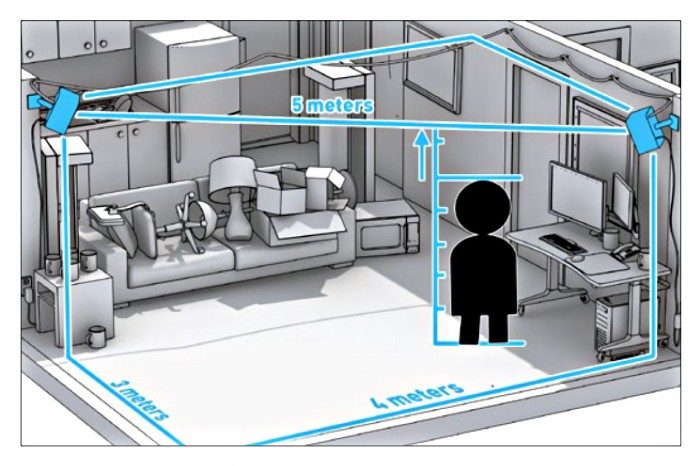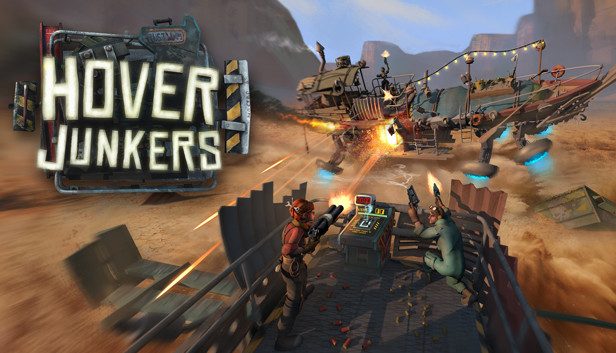The more I think about virtual reality, the more I start to address the reasons that I’m attracted to it in the first place. Having full interaction with a virtual environment—including virtual people—has been my goal since childhood, and we’re inching closer to a day when immersive fiction will be a reality. But while we’re bridging the gap between now and the future, where a ‘perfect hardware solution’ supposedly exists, we need to find a way for the casual, non-gaming new comer to strap on a VR headset and immediately say ‘hey. I get that!’
It’s a growing multi-faceted industry Road to VR will be following for years to come, no doubt, but while I want that holodeck brand of perfect immersive fiction, we’re actually due for something that isn’t too far off.
The first wave of games and experiences built for upcoming consumer headsets will be defined by unpredictably variable room sizes, errant babies/kitties/coffee tables, minimal force-feedback from virtual stimulus; in short, any intruder on the infinite terrain of the virtual. And although we’re fundamentally limited in how we can interact in the space by these design bottlenecks – which represent a painful reminder that we still mostly inhabit the real world – these confines are helping to create some of the most interesting content ever.

The more we see games like Hover Junkers – a first-person shooter that pushes right up to the boundaries of what’s possible with its room-scale vehicles, or Budget Cuts – a stealth assassin game that leverages teleportation in a way that nearly evades the entire issue of limited play space – the more we’ll begin to define games not by the grandiosity they portray in gameplay trailers, but by how they make us feel when we play them. Like a first kiss, we’ll remember these moments for the rest of our lives.
But these are first-person room-scale games targeting the HTC Vive, a system that has hand controllers and ample space for virtual interaction. They depend on your direct influence to affect a change. Oculus and Sony however are stressing mostly seated play for now, possibly in a bid to slowly educate the user away from a lifetime of sitting squarely on their arse. Whether this is true or not, the companies have taken this approach and are developing for it. And this is a great place for seated, episodic narratives to grow.

See Also: Preview: ‘Fated: The Silent Oath’ is a Beautiful Mix of High Action and Real Emotion
Most recently I felt like a real American badass playing Negotiator VR for DK2, a first-person narrative-based title still in the works from 4PM Games, and the interesting bit was my butt was firmly in a chair.
Don’t get me wrong, the downloadable tech demo is short and still pretty rough around the edges, so by no means do I conflate it to greatness based on either criteria. Negotiator however has hit the nail on the head with an incredibly useful game mechanic that we may be seeing a lot more of in the future of seated gameplay, one that could potentially start its own sub-genre of low-effort, cinematic action-adventure games.
In Negotiator, you don’t play as a negotiator-for-hire. Not exactly. Rather you play near a negotiator-for-hire, stepping into his shoes for only the briefest of moments before you jump into the place of a sniper across the map, or an assault team member storming the airplane. It’s not a new concept to 3D gaming in the least, but it is for VR, and that’s seriously fucking interesting.
Negotiator has what I clumsily call the ‘FIFA on-rails perspective teleportation’ (FORPT – I made that up). FORPT offers you two mechanics that you’re familiar with:
- Player switching from FIFA to drive a ball forward
- Perspective teleportation
- I realize I didn’t need to number these
In a game like Negotiator, you aren’t so much a man as you are the man’s mission, requiring little explanation outside of a short introduction of FORPT to the VR newcomer.
See Also: Preview: ‘Rexodus VR’ is a Powerful Intro into the Would-Be World of Space Dinos
Similarly, the cinematic tech demo Super Turbo Atomic Ninja Rabbit puts you in the archetype of the Saturday morning cartoon, where you race down a lonesome road to fight the bad guys. While the demo doesn’t introduce anything outside of a few well-scripted action sequences, the concept is the same. You aren’t a person, you’re an observer moving in an out of a rich, immersive story.

Whether you can affect an outcome in the narrative, or just go along for the ride is clearly up to the developers, but I propose that both passive and active cinematic experiences are ripe for the picking, and that we should be experiencing full episodes of content like Super Turbo Atomic Ninja Rabbit and Negotiator on the regular.
Creating the mental space for VR narratives is in essence what Oculus Story Studio has been trying to spark in the VR community using Henry, and their most recent project Dear Angelica, to argue the case for cinematic narratives in VR. The idea that narrative-based VR experiences can be entertaining—even without your own personality thrust into the mix—is so potent, so directly attainable at this very moment that it’s sending chills down my spine just thinking about it.
We have our bottlenecks in VR and we need to enjoy them—all of them—while they last. But I’m ready to sit down and see what comes next.







